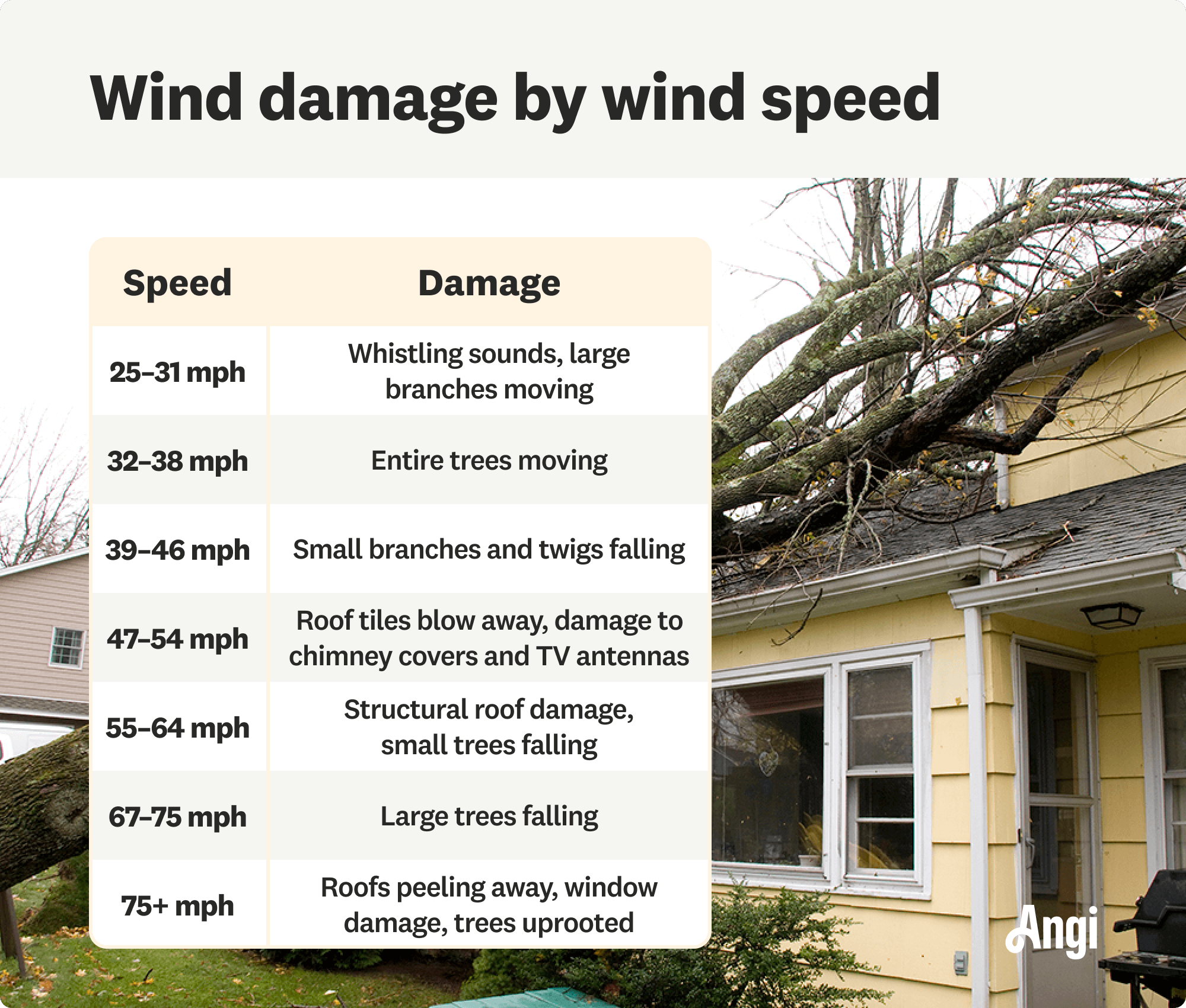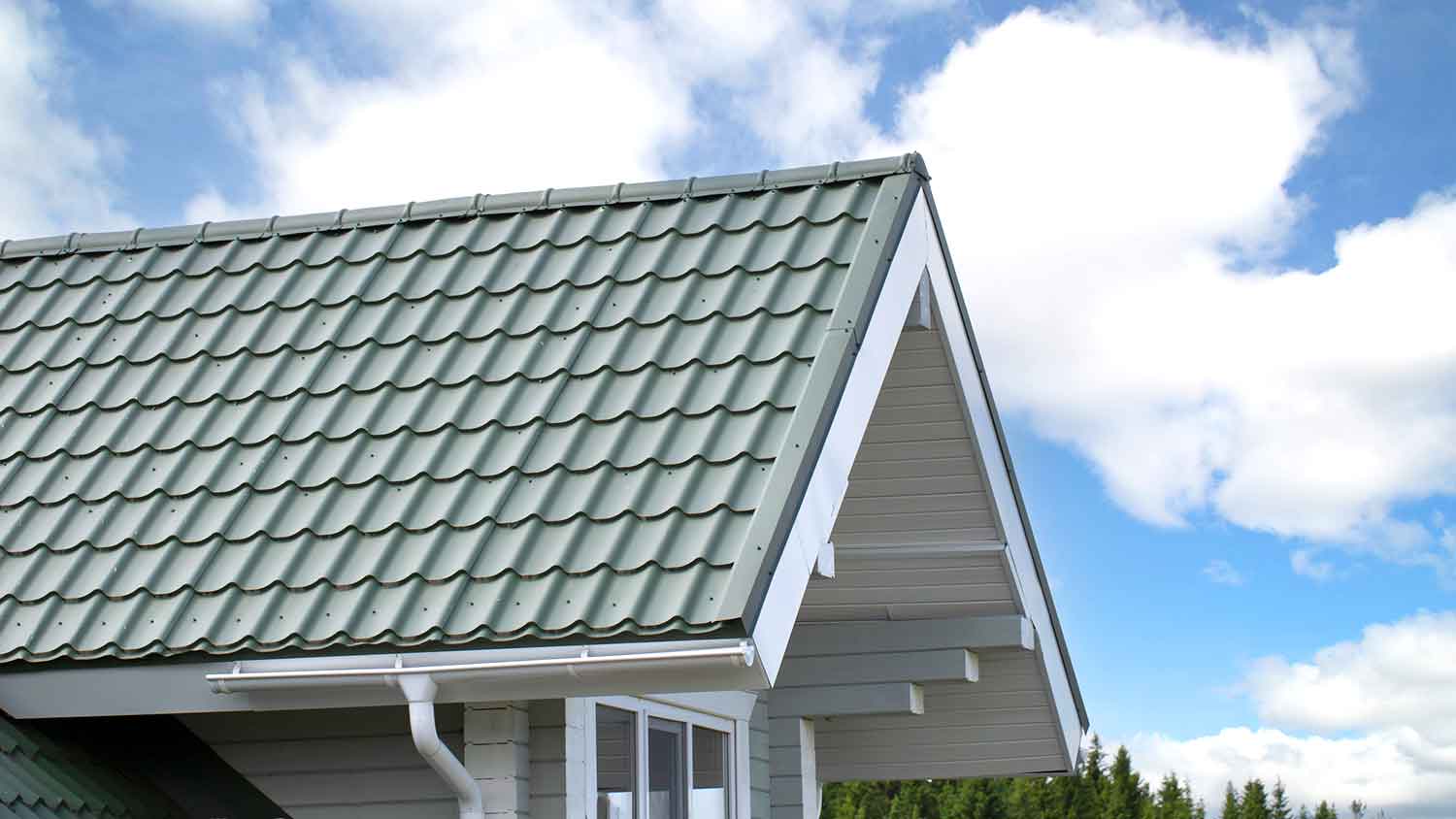What Is an Impact-Resistant Roof? Pros, Cons, and More
Neither hail nor wind nor flying debris shall penetrate impact-resistant roofs


An impact-resistant roof stands up to hail and wind.
Asphalt shingles and metal roofs are common options.
Impact-resistant roofs have a premium cost.
With this type of roof, you often get long-term savings.
If you’re tired of products that don’t live up to their names, learning what an impact-resistant roof is should brighten your day. The impact-resistant roof does what it promises, resisting damage from hail, falling branches, and high wind. It’ll even stand up to the occasional stray golf ball if you live near a local golf course. We’ll discuss the pros and cons of installing an impact-resistant roof.
What Is an Impact-Resistant Roof and Who Needs One?
So, what is an impact-resistant roof? Impact-resistant roofing consists of materials with a design made to withstand damage. They can look like other common roofing materials, but they defy damage from storms better than traditional shingles. They can withstand hail stones from severe thunderstorms, debris from windstorms, and other items that may fall on your roof.

Do you need an impact-resistant roof? If you live in an area that often has severe storms, you will receive benefits versus a roof consisting of standard materials. You may even save money on your insurance premiums by installing this kind of roof. If you think your roof might be at risk during the next storm, call a local emergency roofer for an assessment.
How Does an Impact-Resistant Roof Work?
Two testing organizations—Underwriters Laboratories and FM Approvals—provide durability ratings for all roofing materials, including impact-resistant materials. During testing, the organizations drop steel balls or ice balls onto the shingles from varying heights and then measure the damage.
Shingles come in four classes:
Class 1: Can withstand steel balls 1.25 inches in diameter from a height of 12 feet
Class 2: Can withstand steel balls 1.5 inches in diameter from a height of 15 feet
Class 3: Can withstand steel balls 1.75 inches in diameter from a height of 17 feet
Class 4: Can withstand steel balls 2 inches in diameter from a height of 20 feet
Shingles that receive a Class 4 designation are the most impact-resistant, while Class 1 is the least impact-resistant. To be considered impact-resistant, the roofing materials must have a Class 4 designation, although some brands may market themselves as impact-resistant with a Class 3 designation.
What Materials Work As an Impact-Resistant Roof?

Multiple kinds of materials can qualify for designation as an impact-resistant roof, including:
Asphalt shingles
Metal
Concrete
Plastic
Resin
Rubber
The most common impact-resistant roofing materials are either asphalt shingles or metal, although the other materials also deliver good results. Not all roofers are able to source or install every potential impact-resistant roof material.
Pros and Cons of an Impact-Resistant Roof
Although the impact-resistant roof is able to stand up to hail and other types of damage, it does carry a higher cost than standard roofing materials. Here are the pros and cons of an impact-resistant roof.
| Pros | Cons |
|---|---|
| Limits storm damage | Costlier up front |
| Protects from leaks | Some design limits |
| Lower insurance cost | Heavier materials |
| Fewer repairs needed | Tougher to install |
Is an Impact-Resistant Roof Worth It?
You’ll often pay a premium of 10% to 20% for impact-resistant asphalt shingles versus standard shingles. You also could choose to install a metal roof, which is a naturally impact-resistant material. However, metal roofs cost more than asphalt roofs for the materials and installation.
If you have a home or business property insurance policy with a high deductible, your impact-resistant roof may survive a hail storm that other roofs don’t. This means you don’t need to replace it and can save the deductible amount.
The Insurance Institute for Business & Home Safety estimates people who live in areas with frequent thunderstorms must replace their shingle roofs an average of every seven to 10 years because of storm damage. Without damage, a shingle roof’s average life span is about 25 to 30 years. Having an impact-resistant roof could save you from having to pay the deductible once or twice every roughly 30 years.
If you don’t live in an area that has hail storms, though, the extra cost of the impact-resistant roof probably isn’t worth it. A local roofing company can advise on what the impact-resistant roof will cost to install and whether these materials are a good value for your location.
Are Impact-Resistant Shingles Worth It?
Impact-resistant shingles are more expensive than standard ones, but they’re often worth the added investment if you live in an area that sees extreme weather. You can expect to pay between 10% and 20% more for the materials, but you stand to avoid expensive roof damage over the life of the product.
When you consider the average cost to repair hail damage on a roof—around $4,250—it’s easy to see how paying more up front for your shingles can save you money. You’ll be less likely to need roof repairs or a full roof replacement after hail damage or another severe weather event.
Frequently Asked Questions
An impact-resistant roof can last between 30 and 50 years, depending on how much wear and tear it receives.
You can check beneath your shingles to see if they’re listed as Class 4 or Class 3. Class 4 are technically the only shingles considered impact-resistant, but Class 3 shingles are still fairly resistant.
Yes, impact-resistant roofs can lower your homeowners insurance. Some insurance companies offer discounts or reduced rates if you use Class 4 or Class 3 shingles.





- Roofers
- Metal Roofing
- Roof Repair
- Roof Inspection
- Vinyl Siding Repair Contractors
- Flat Roofing Companies
- Commercial Roofing
- Emergency Roofing Companies
- Leaky Roof Repair
- Metal Roof Repair
- Business Roof Repair
- Flat Roof Repair
- Tile Roof Repair
- Slate Roofers
- Rubber Roofers
- Roofing & Siding
- Metal Roof Installation
- Affordable Roofing
- Roof Sealing
- Attic Ventilation Contractors
- Are Impact-Resistant Shingles Worth It?
- 9 Warning Signs You Need a New Roof
- How Much Hail Damage Do You Need to Replace a Roof?
- Should You Repair or Replace Your Roof?
- 30 Common Roofing Mistakes You Need to Know
- 15 Common Roof Issues You Shouldn’t Ignore and How They’re Fixed
- Why Is Hail Damage Bad for a Roof?
- What to Do After Hail Damages Your Roof
- 8 Signs of Storm Damage to a Roof and What to Do About It
- 9 Ways to Help Your Roof Last Longer










